42 what causes acid rain
Acid Rain - Definition, Causes, Effects, Examples ... Acid rain is caused by a chemical reaction that begins when compounds such as sulphur dioxide and oxides of nitrogen are released into the air. These substances can rise very high up into the atmosphere, where they mix and react with water, oxygen, and other chemicals to form more acidic pollutants called acid rain. What Causes Acid Rain: Causes, Impact & Solutions - Utopia Acid rain is caused primarily by sulfur dioxide (SO2) and nitrogen oxide (NOx) emissions. When these gases react with the moisture in the atmosphere, sulfuric and nitric acids form. Wind may transport these acid particles over long distances before they come down as wet or dry deposition.
What Are the Two Natural Causes of Acid Rain? - Brownfield ... Acid rain is rain that has an abnormally low pH level, indicating that it is particularly acidic. The release of hazardous particles into the atmosphere, such as sulfur dioxide (SO 2) and nitrogen oxide, causes acid rain (NO 2). These gases are removed from the air by falling into the soil or being absorbed by vegetation.
What causes acid rain
How does air pollution cause acid rain? - The science of air Acid rains are caused due to mixing of hazardous airborne pollutants into the atmosphere with water droplets and clouds. Acid rains, also known as acid precipitation, cause detrimental effects on the living organisms on the Earth. It can damage natural resources as well as animal health. The Causes of Acid Rain | Cuarl The biggest cause of acid rain are sulphates, an air pollutant that come primarily from coal-fuelled power plants and the burning of peat. Acid rain is caused by many other pollutants as well, which have varying effects on waters, fish and plant life. The most common cause of acid rain is the pollution caused by fossil fuels. Primary Causes of Acid Rain | Earth Eclipse Primary Causes of Acid Rain Acid rain is formed by elevated levels of sulfur and nitric acids in the atmospheres that accumulate as a result of Nitrogen oxides (NOx) and Sulfur dioxides (SO2) emissions. Acid rain is a mix of atmospheric water molecules and dry depositions of Sulfur dioxides and Nitrogen oxides emitted from industries and vehicles.
What causes acid rain. › acidrainAcid Rain - US EPA Feb 01, 2022 · The causes of acid rain, how acid rain affects our environment and our health, and what regulatory actions have been put in place to reduce the pollutants that cause acid rain. What Causes Acid Rain? - Green Matters What causes acid rain? As explained by the EPA, acid rain is the result of sulfur dioxide (SO2) and nitrogen oxides (NOX) being emitted into the atmosphere and subsequently transported by wind and air currents. › 63065-acid-rainAcid Rain: Causes, Effects and Solutions | Live Science Mar 16, 2022 · Acid rain, or acid deposition, is a broad term that includes any form of precipitation that contains acidic components, such as sulfuric acid or nitric acid. Causes of Acid Rain - University of Illinois Urbana-Champaign Causes of Acid Rain Acid rain is caused by the formation of nitric and sulfuric acids in our atmosphere. These compounds are strong acids and they are highly soluble in water and they dissolve in the water droplets within clouds. Sulfur and nitrogen oxides are lost from the atmosphere through dry deposition of sulfate and nitrate containing ...
Acid Rain - What is It? What Are Their Causes and ... Anthropogenic causes of acid rain include: industrial emissions heating systems energy production exhaust fumes Both nitrogen oxide and sulfur dioxide can cause acid rain. The gas released in the burning process ties with the water molecule in the atmosphere. That causes an acidification of the precipitation. › acidrain › whatWhat is Acid Rain? - US EPA Acid rain results when sulfur dioxide (SO 2) and nitrogen oxides (NO X) are emitted into the atmosphere and transported by wind and air currents. The SO 2 and NO X react with water, oxygen and other chemicals to form sulfuric and nitric acids. These then mix with water and other materials before falling to the ground. Acid Rain: What it is, Causes and Consequences - Iberdrola SEE INFOGRAPHIC: Causes and consequences of acid rain [PDF] External link, opens in new window. EFFECTS OF ACID RAIN. The pH of rain changes when combined with sulphuric acid and nitric acid, so when it falls onto the ground or water it alters their chemical characteristics and endangers the balance of the ecosystems. This is known as acidification of the environment, a phenomenon that has ... › en-us › weatherAcid rain: Causes, effects and solutions Mar 16, 2022 · Acid rain is any form of precipitation that contains acidic components, such as sulfuric or nitric acid. It affects nearly everything: plants, soil, trees, buildings and even statues.
How to Prevent Acid Rain - Green Coast The main source of acid rain is human-caused burning of fossil fuels. Sulfur is a contaminant, principally of coal, oil, and diesel fuel, that is released when they're burned in power plants, homes, some cars, or construction vehicles. Once in air, sulfur combines with oxygen to form sulfur dioxide. Acid Rain and Water | U.S. Geological Survey The precursors, or chemical forerunners, of acid rain formation result from both natural sources, such as volcanoes and decaying vegetation, and man-made sources, primarily emissions of sulfur dioxide (SO 2) and nitrogen oxides (NO x) resulting from fossil fuel combustion. What Are the 10 major Causes of Acid Rain ? - Soul and Land Acid rain Caused By Carbon Dioxide Caused By Deforestation Caused By Fossil Fuels Caused By Human Activity Caused By Industries Caused By Nuclear Radiation Caused By Pollution Caused By Soil Erosion Caused By The Burning Caused By Volcanoes Causes Causes of Acid Rain Javed Pasha previous post 12 Best Ways To Control Air Pollution next post Acid rain: causes and effects - Canada.ca Acid rain occurs when acid-containing precipitation falls onto the earth's surface. Precipitation comes in the form of rain, snow, sleet, or hail. Precipitation collects acidic particles and gases and becomes acidic. These particles will have a pH level below 5.6. There are two types of deposition processes: wet and dry.
Acid Rain - Chemicals, Causes and Environmental Effects The main acid rain causes are the formation of mineral acids like carbonic acid, nitric acid and sulphuric acid. The Atmospheric Reaction of Acid Rain Carbon dioxide gas molecules react with water molecules to form carbonic acid (H2CO3). The ability of carbonic acid (H2CO3).
› science › acid-rainacid rain | Definition, Causes, Effects, & Formulas | Britannica acid rain, also called acid precipitation or acid deposition, precipitation possessing a pH of about 5.2 or below primarily produced from the emission of sulfur dioxide (SO2) and nitrogen oxides (NOx; the combination of NO and NO2) from human activities, mostly the combustion of fossil fuels. In acid-sensitive landscapes, acid deposition can reduce the pH of surface waters and lower ...
Acid rain facts and information - Environment Causes of acid rain. Rotting vegetation and erupting volcanoes release some chemicals that can cause acid rain, but most acid rain is a product of human activities.
www3.epa.gov › acidrain › educationAcid Rain Students Site: What causes acid rain? Acid rain is caused by a chemical reaction that begins when compounds like sulfur dioxide and nitrogen oxides are released into the air. These substances can rise very high into the atmosphere, where they mix and react with water, oxygen, and other chemicals to form more acidic pollutants , known as acid rain.
Acid Rain: Causes, Effects and Solutions to Increase in ... Acid rain generally leads to weathering of buildings, corrosion of metals, and peeling of paints on surfaces. Erupting volcanoes contains some chemicals that can cause acid rain. Apart from this, the burning of fossil fuels, the running of factories and automobiles due to human activities are a few other reasons behind this activity.
› acid-rain-definition-1434936Acid Rain: Causes, Effects, and Solutions - ThoughtCo Jan 22, 2020 · What Causes Acid Rain? Acid deposition can be caused by natural sources such as volcanoes, but it is mainly caused by the release of sulfur dioxide and nitrogen oxide during fossil fuel combustion. When these gases are discharged into the atmosphere, they react with the water, oxygen, and other gases already present there to form sulfuric acid ...
Which Gases Cause Acid Rain? (Detailed Explanation with FAQs) Acid rain is mostly caused by gaseous sulphur dioxide and gaseous nitrogen dioxide. These gases are produced as a by product from the combustion of fuels. In the atmosphere, sulphur dioxide is converted into sulphuric acid via an oxidation reaction. Nitrogen dioxide is transformed into nitric acid due to similar reactions in the atmosphere.
It is caused by emissions of nitrogen oxide and sulfur dioxide, which react with water molecules in the atmosphere and produce acid rain. Acid rain has harmful effects on the environment, especially on aquatic animals and plants. It has also shown damaging effects on freshwaters, soils and insects. Stop Food Speculation!
Effects of Acid Rain - US EPA Melting snow and heavy rain downpours can result in what is known as episodic acidification. Lakes that do not normally have a high level of acidity may temporarily experience effects of acid rain when the melting snow or downpour brings greater amounts of acidic deposition and the soil can't buffer it.
Acid rain, explained | National Geographic Normal rain is slightly acidic, with a pH of 5.6, while acid rain generally has a pH between 4.2 and 4.4. Causes of acid rain. Rotting vegetation and erupting volcanoes release some chemicals that can cause acid rain, but most acid rain is a product of human activities. The biggest sources are coal-burning power plants, factories, and automobiles.
Acid Rain: Causes, Forms, Prevention, and Sample Questions Acid rain causes various respiratory issues in animals and humans. Acid rain alters the aquatic life as if it falls to the river, changes the river's pH, and causes an acidic environment to the aquatic life present in the river. Acid rain is also responsible for the water pollution of the river.
What are Some Major Causes of Acid Rain (5 Steps) - HowFlux What are Some Major Causes of Acid Rain. Posted on January 22, 2016 February 2, 2018 by Editorial Team . You can understand acid rain as the rain that has got an acidic pH value that is less than seven. These types of rains are harmful for everyone and can make a huge loss to monuments, buildings, soil, plants and marine life as well. These ...
Primary Causes of Acid Rain | Earth Eclipse Primary Causes of Acid Rain Acid rain is formed by elevated levels of sulfur and nitric acids in the atmospheres that accumulate as a result of Nitrogen oxides (NOx) and Sulfur dioxides (SO2) emissions. Acid rain is a mix of atmospheric water molecules and dry depositions of Sulfur dioxides and Nitrogen oxides emitted from industries and vehicles.
The Causes of Acid Rain | Cuarl The biggest cause of acid rain are sulphates, an air pollutant that come primarily from coal-fuelled power plants and the burning of peat. Acid rain is caused by many other pollutants as well, which have varying effects on waters, fish and plant life. The most common cause of acid rain is the pollution caused by fossil fuels.
How does air pollution cause acid rain? - The science of air Acid rains are caused due to mixing of hazardous airborne pollutants into the atmosphere with water droplets and clouds. Acid rains, also known as acid precipitation, cause detrimental effects on the living organisms on the Earth. It can damage natural resources as well as animal health.

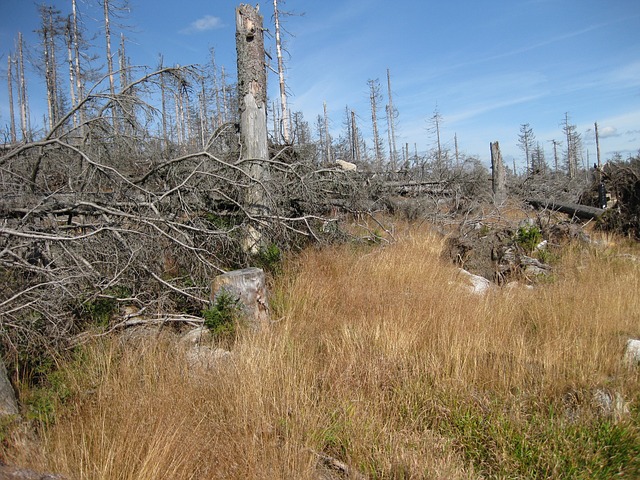
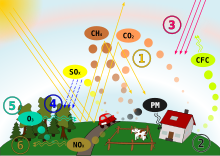
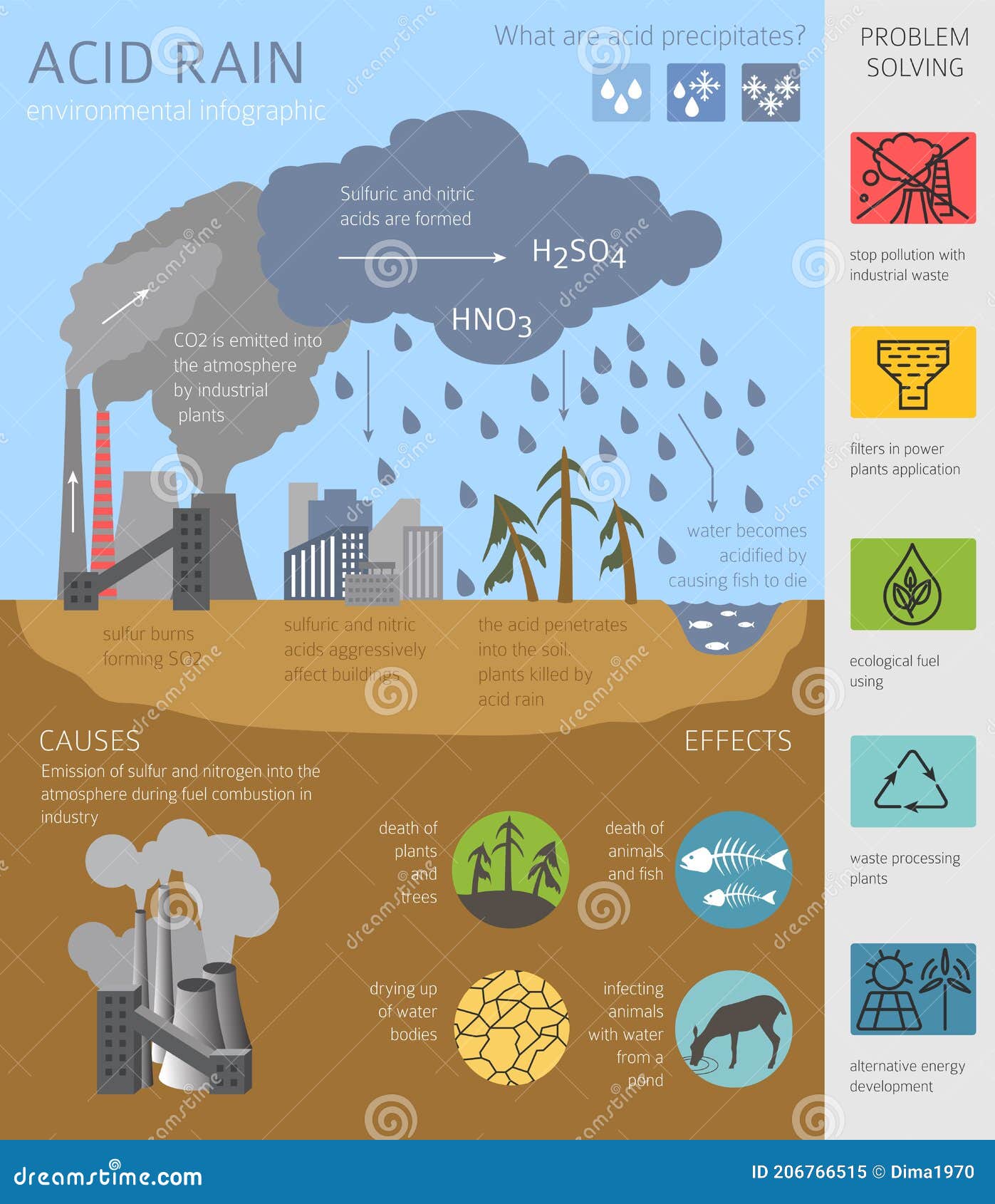
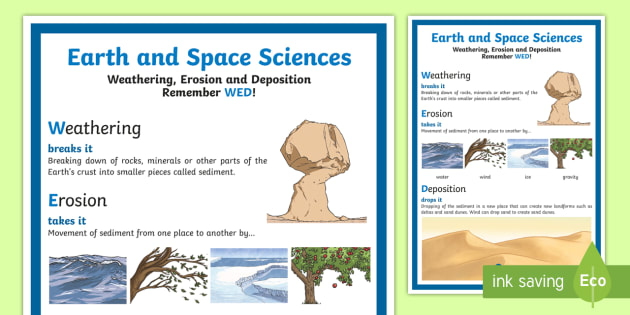





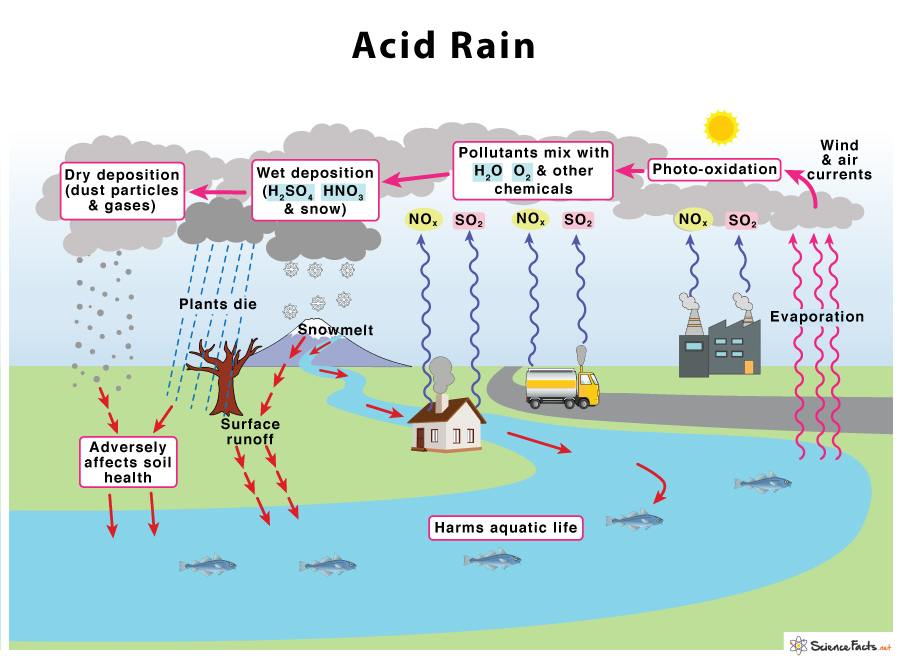


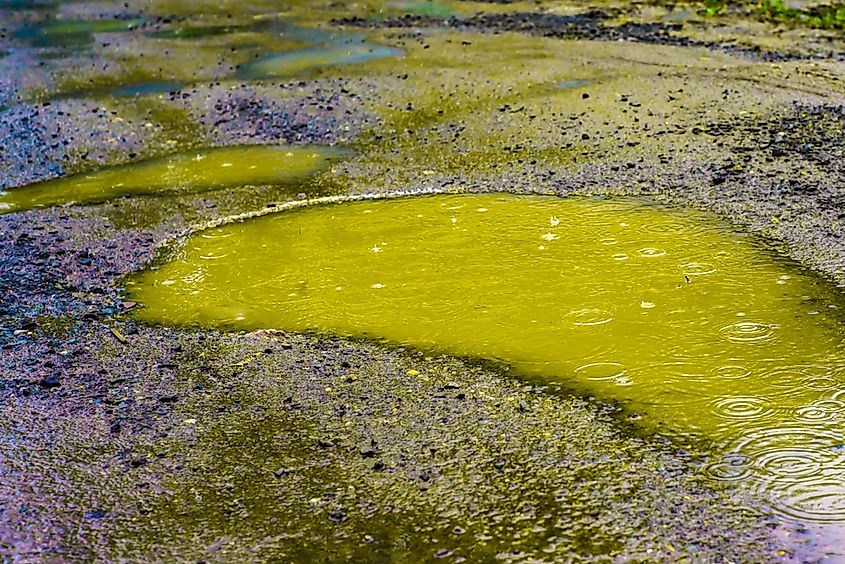

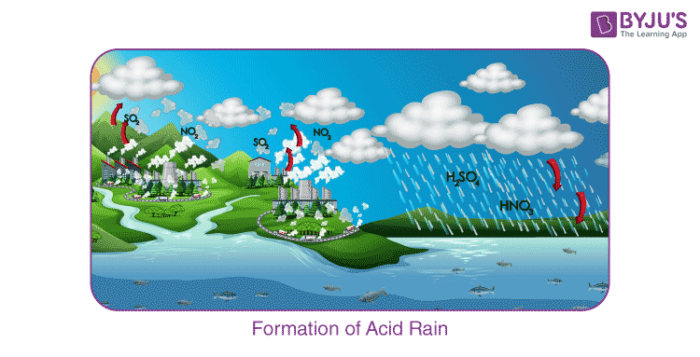

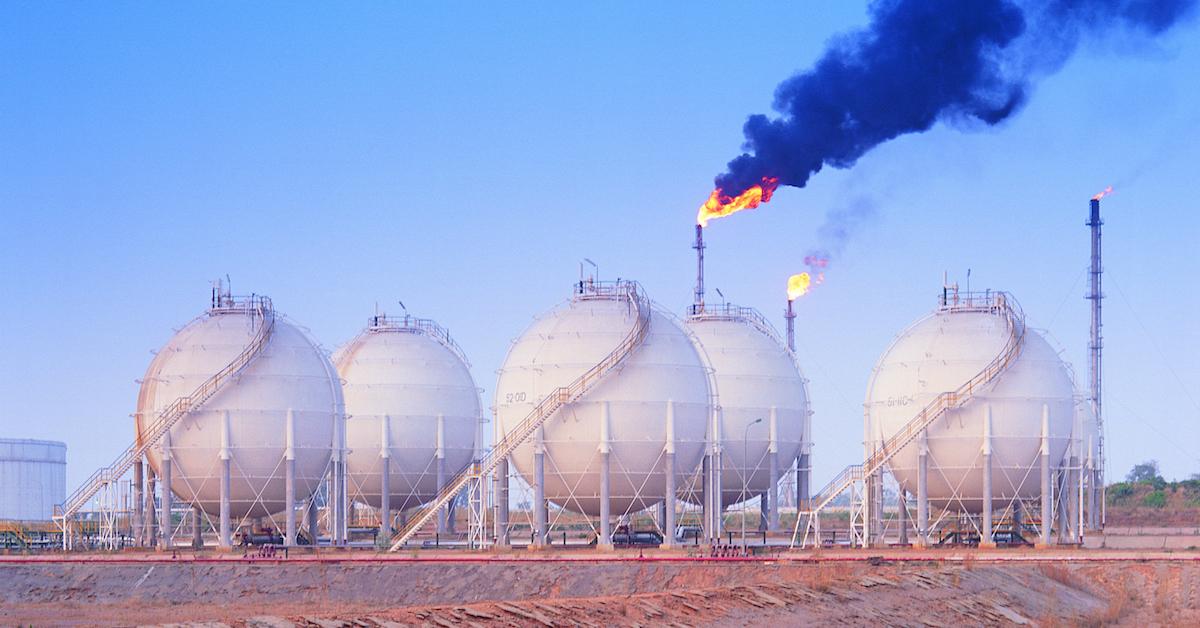
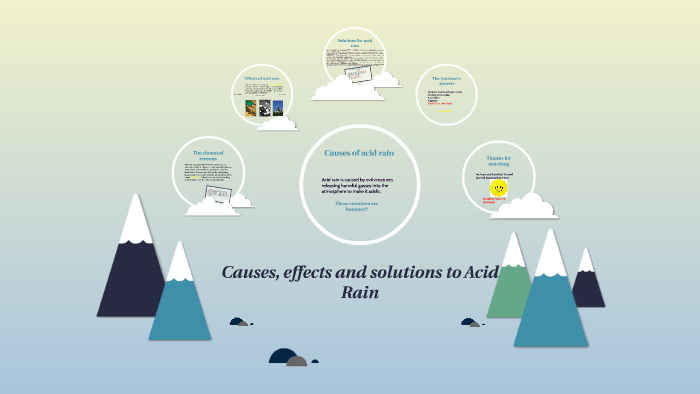
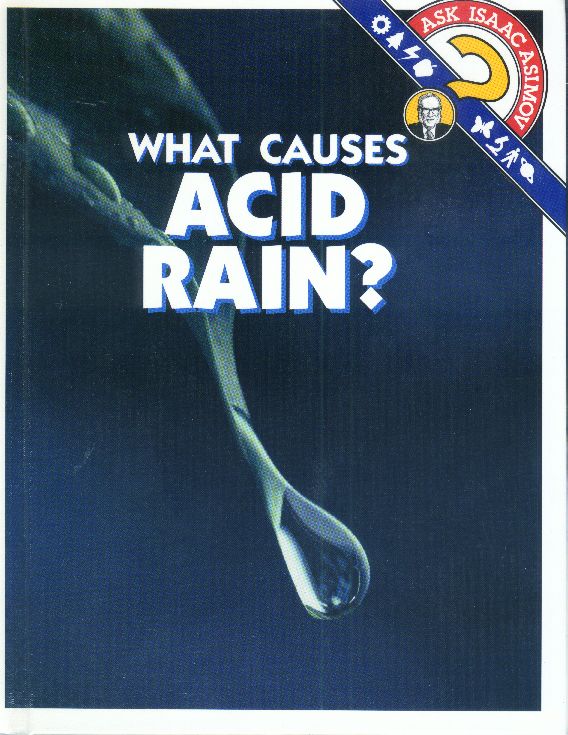
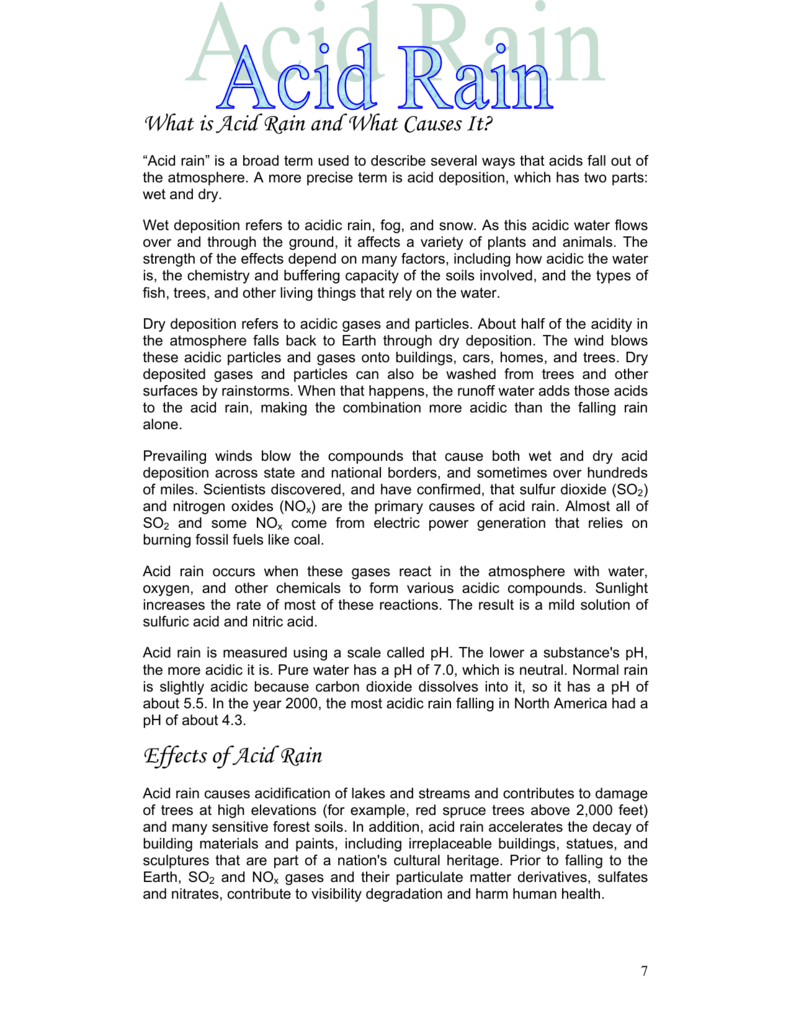
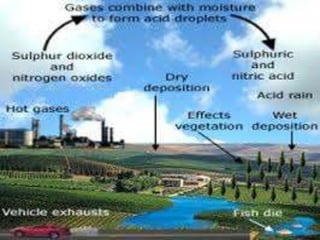











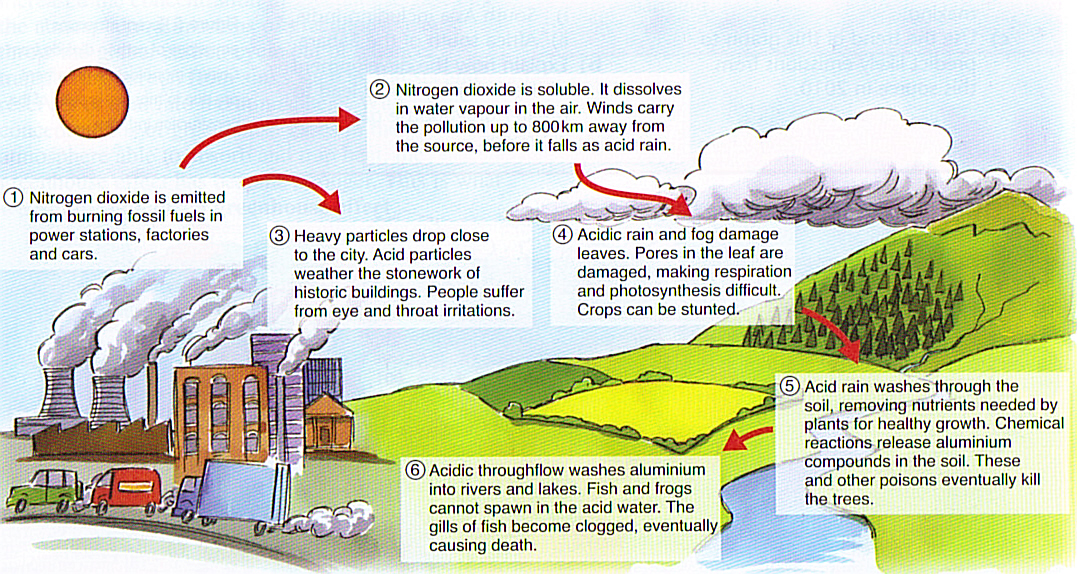
0 Response to "42 what causes acid rain"
Post a Comment